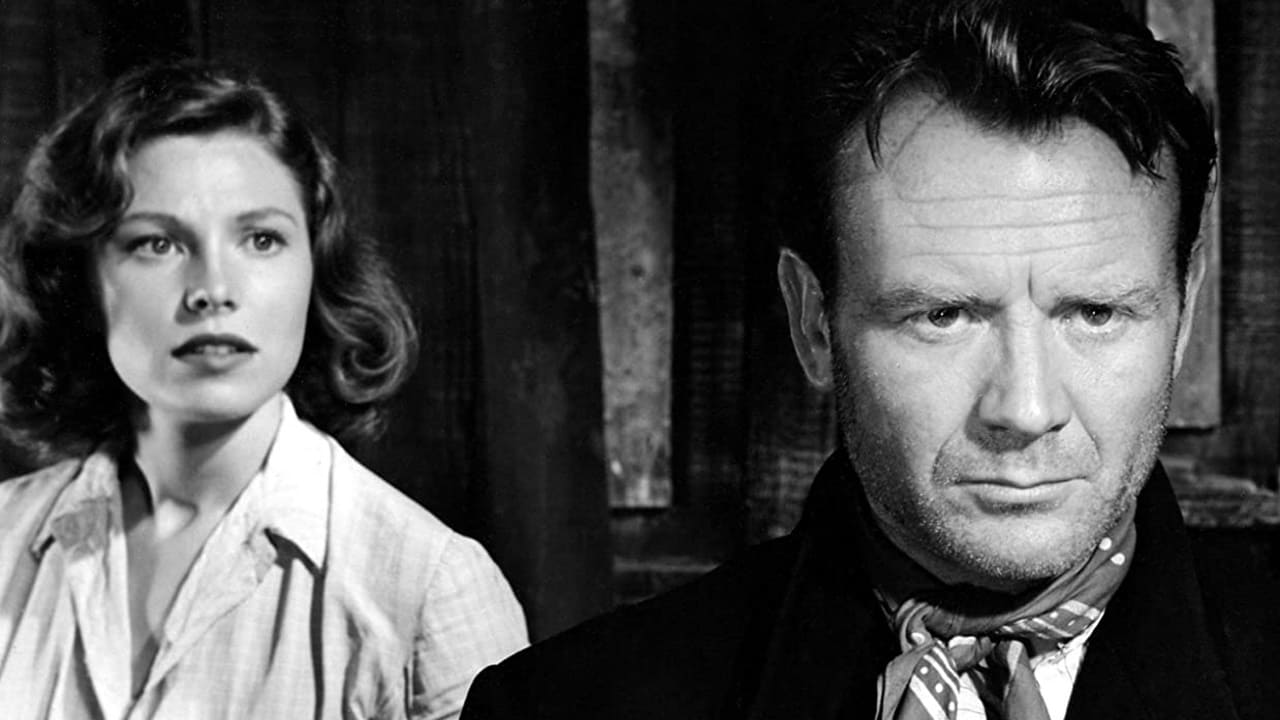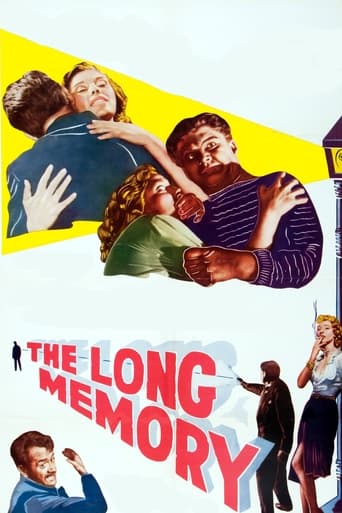KnotMissPriceless
Why so much hype?
GurlyIamBeach
Instant Favorite.
Ketrivie
It isn't all that great, actually. Really cheesy and very predicable of how certain scenes are gonna turn play out. However, I guess that's the charm of it all, because I would consider this one of my guilty pleasures.
Bea Swanson
This film is so real. It treats its characters with so much care and sensitivity.
Stephen Abell
The one thing Phillip Davidson (Mills) does wrong is fall in love. On the night he decides to ask Fay's (Sellars) father for her hand he's in the middle of conducting some illicit business; that of smuggling a criminal out of England. Mobster, Boyd (Chandos), who is funding the criminal's escape takes umbrage at the disrespect the criminal shows him. Lashing out with a poker he strikes and kills him. Davidson tries to stop Boyd's rampage and in the fight the boat catches fire. The lifeboatmen pick up Davidson after he jumps off the boat, aflame. Unfortunately, the survivors change their story so they won't be jailed for trafficking. They all confirm there was no criminal onboard and that it was Davidson who struck and killed Boyd. Davidson is jailed for twelve years. Upon his release, he sets out for revenge on those who took those years away from him.What stands out the most is the atmospheric and beautifully shot camera work. Director, Hamer works well with black and white film. The sequence where the freed Davidson steps off the train and is followed by a plain-clothed policeman is one of the most atmospheric I've seen. It's brilliant. Hamer sets the pace slow and this adds to the feeling of despair and loneliness, which oozes off the screen. There's a bleakness that starts at this point and permeates most of the picture. He is also very good at using the locations to add to the atmosphere... The lone hotel, near derelict, on a sandy beach road... the wooden slatted cafe for the seamen and fishermen... the three beached barges slowly rotting. He's also very adept at the iconic shot, such as a couple of shots of London Bridge. And, especially the sequence where Davidson finally gets to Pewsey (Slater). The entire thing is exquisitely structured and choreographed, though, it's the scene where Pewsey looks through the letterbox to see Davidson waiting in a doorway that holds the most power. I never thought of Mills' as a tough guy or a hard man but when I watched this scene I thought, now that's somebody I wouldn't mess with. Perfect acting with perfect direction makes a perfect scene.Though Mills' is an outstanding actor, which he proves here, there are a few times when it gets just too melodramatic, in a soap opera way. Luckily enough, this only becomes overpowering towards the latter part of the movie. It does detract from the film's power, though I can forgive that because there are so many better acting sets within the film.All the actors are good within their roles and there's even an eccentric hermit, Jackson, to keep it interesting. One strange character is alright, because they are out there, and Michael Martin Harvey does a fantastic portrayal. He doesn't go overboard and this makes the man more real to the viewer. Even the lesser characters are full and rounded. Take Mrs Pewsey (Hird), even though her husband has run off with a trollop, she still goes round to the trollop's house to warn him of Davidson's return. While she's there, she takes care of him because he always gets a chest cold at this time of year. Well thought out, written, acted and directed. These little things only add interest to the viewer, add realism and strength to both the story and the film.Then there's the story. Though it's a revenge tale there's an added depth to even that. When Davidson finally meets his first love, Fay, after his release he realises his perspective and feelings have altered. This is a sobering, sad, and profound realisation.I have to admit this has now made it onto my expanding favourite flicks list and I would recommend this to all thriller fans, revenge freaks, crime story lovers and drama aficionados everywhere. Also, if you're a budding filmmaker, you could do worse than checking this out.
fillherupjacko
Mudflats of Kent's barren landscape (the suitably named Gravesend, to be precise) – and then John Mills at Waterloo Station. He's carrying a brown paper parcel – the tell-tale sign of a man just out of clink – and he's being tailed by John Horsley (Doc Morrissey – "the wizard of the aspirin" - from Reggie Perrin, Perrin fans).Back at the mudflats, Mills pipes aboard a stationary barge. An oddball tries to befriend him - "Nice to have a friend down here. It's a bit lonely sometimes. Would you like a cup of tea?" – but Mills is having none of it. He's so hell bent on revenge that he's probably going to Hell.Here, Hell is a memory you can't let go of.In flashback, we see his fiancé's (Elizabeth Sellars) father who's helping to ship someone on the run to Rotterdam. Mills gets involved with a rampaging Boyd (John Chandos) and the boat goes down in flames. He's convicted of murder when his fiancé and Pewsey (John Slater), a bronchial moron, lie in court that there was no "other man" on the boat.Twelve years later, Mills' fiancé is married to the police officer involved in the original case (John McCallum). . . . . .Mills is superb in this. He doesn't do very much – just simmers away. His emotions are reflected in the bleak and desolate landscape. Characters are monosyllabic; strange derelicts peopling a landscape of riverside scrublands that almost anticipates Beckett. The dirt and decay of Mill's home is contrasted with his former fiancé's family show home. It's like looking at the negative of a photograph.All the main characters face a moral dilemma. Elizabeth Sellars lied in court to protect her father. Her decision to lie means that her husband will have to resign – they'll lose their home – she'll go to prison. She decides to leave the country (if only her old man was still around to help her!) A few hours later and she's trying to jump under a train. Her life is quite literally unravelling because of her original decision.Most interesting of all is when the "dead" Boyd reappears. We are now watching a film about a man wrongfully convicted of murdering someone he didn't murder – who isn't actually dead – about to murder the man he was wrongfully convicted of killing.
smithbplancs
I caught this on film four a couple of weeks ago and thought it was excellent. It is a painful story at times, watching John mill's former lover grappling with her guilt, often physically is portrayed with undignified desperation. Her husband, the investigating officer quietly torn apart by the realisation of his own hand in a miscarriage of justice and his subsequently crumbling home and professional life. John Mills' constant struggle to realise a revenge that has torn him throughout his years in prison and an inability to exact that revenge. He shows, without being sanctimonious, how damaging and unfulfilled revenge is and the characters around him prove that redemption is always hard won.
chorima75
This is not Chicago…this is postwar London. This is not Bogart…this is John Mills. This is film noir…the English way. I discovered this little known gem on TV the other day, while swapping between channels. I spent the next hour and a half glued to the screen. At first, John Mills would seem an unlikely choice for the leading role, but the film would not work without him. He perfectly portrays Davidson, a common man framed by his own girlfriend for a murder he did not commit. He is released after twelve years in prison and finds his girlfriend Fay now married to Lowthers, the policeman who investigated the case. Will Davidson seek vengeance? Or will he start a new life with Ilsa, a refugee girl he has just met? I cannot even imagine Humphrey Bogart or Robert Mitchum questioning if revenge is worthy. However, Mills possesses the innocence and fragility required to make his doubts believable. His tender relation with Ilsa is the best thing in the film. Both characters work as reflections of each other: Ilsa has been made orphan and destitute by the war, while Davidson's parents died while he was in jail. Ilsa works in a bar in the docks, where she suffers constant humiliations and abuse by the male customers. She falls for Davidson when he saves her from a rapist, and literally offers herself to him (no prizes for guessing: he is unable to resist her). We could be cynical about their motives for getting together…or we could see them as two human beings who desperately need to feel loved.One of the comments wonders why the Lowthers sleep in separate beds. The answer is censorship. Till the late 50s (this film was released in 1953), not even married couples were allowed to share a bed on screen. Davidson and Ilsa also sleep in twin beds in his tiny shack, even when a previous scene clearly suggests that they have become lovers. However, the film turns censorship to its advantage. One sequence alternatively shows both couples talking in bed. Davidson and Ilsa, the couple who are falling in love, have their beds joined at the headboard, so the camera can show them together in the same shot. Lowthers and Fay, the couple who are falling apart, have their beds separated by a bedside table, so their conversation is shown by means of alternate shots of one or the other. I totally agree that the title could not be more appropriate: this film will stay in your memory for a long time.

